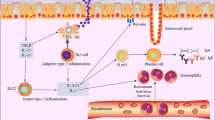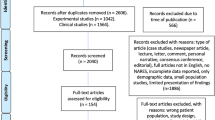Abstract
Objective
Identifying the biomarkers for uncontrolled chronic rhinosinusitis (CRS) is important for directing treatment decisions. Eosinophilia has been reported to be involved in the poor disease control of CRS and mucus eosinophil-derived neurotoxin (EDN) is potentially a biomarker of intense eosinophil activation. This study aimed to assess the relationship between mucus EDN levels, disease severity, and degree of CRS control.
Methods
A total of 150 adult patients with CRS and 25 healthy controls were prospectively enrolled. The nasal mucus and tissue specimens were collected to analyze EDN levels. Disease severity was assessed by Lund-Mackay score and 22-item Sino-Nasal Outcome Test (SNOT-22) score. Five CRS symptom severities during the prior month (nasal blockage, rhinorrhoea/postnasal drip, facial pain/pressure, smell, sleep disturbance or fatigue), use of rescue medications in the last six months, and the presence of diseased mucosa on nasal endoscopy were obtained. Consistent with the European Position Paper on Rhinosinusitis and Nasal Polyps 2020 CRS control criteria, uncontrolled CRS was defined as meeting at least three items.
Results
40% of patients with CRS presented with uncontrolled status. Patients with uncontrolled CRS had significantly higher nasal mucus EDN levels (P = 0.010), percentage of blood eosinophil (P = 0.015), SNOT-22 score (P < 0.001), Lund-Mackay score (P = 0.008), and a more eosinophilic dominant phenotype of CRS (P < 0.001) than patients with controlled CRS. Furthermore, mucus EDN levels were positively correlated with blood eosinophils (r = 0.541, P = 0.005), SNOT-22 score (r = 0.460, P = 0.021), and Lund-Mackay score (r = 0.387, P = 0.039). Mucus EDN levels were the significant parameter related to uncontrolled CRS in multivariable analysis after adjusting for patient demographics and comorbidities (odds ratio = 1.323; P = 0.004).
Conclusions
Mucus EDN levels may be a potential biomarker for identifying the CRS control status.




Similar content being viewed by others
Data availability
Not applicable.
References
Hastan D, Fokkens WJ, Bachert C, Newson RB, Bislimovska J, Bockelbrink A, et al. Chronic rhinosinusitis in Europe—an underestimated disease. A GA2 LEN study. Allergy. 2011;66(9):1216–23.
Hirsch AG, Stewart WF, Sundaresan AS, Young AJ, Kennedy TL, Scott Greene J et al (2017) Nasal and sinus symptoms and chronic rhinosinusitis in a population-based sample. Allergy 72(2):274–281
Shi JB, Fu QL, Zhang H, Cheng L, Wang YJ, Zhu DD et al (2015) Epidemiology of chronic rhinosinusitis: results from a cross-sectional survey in seven Chinese cities. Allergy 70(5):533–539
Baguley C, Brownlow A, Yeung K, Pratt E, Sacks R, Harvey R (2014) The fate of chronic rhinosinusitis sufferers after maximal medical therapy. Int Forum Allergy Rhinol 4(7):525–532
Fokkens WJ, Lund VJ, Hopkins C, Hellings PW, Kern R, Reitsma S, et al. European Position Paper on Rhinosinusitis and Nasal Polyps 2020. Rhinology. 2020;58(Suppl S29):1–464.
Alanin MC, Hopkins C (2020) Effect of functional endoscopic sinus surgery on outcomes in chronic rhinosinusitis. Curr Allergy Asthma Rep 20(7):27
van der Veen J, Seys SF, Timmermans M, Levie P, Jorissen M, Fokkens WJ et al (2017) Real-life study showing uncontrolled rhinosinusitis after sinus surgery in a tertiary referral centre. Allergy 72(2):282–290
Sedaghat AR, Phillips KM. Chronic rhinosinusitis disease control: a review of the history and the evidence. Expert Rev Clin Immunol. 2023:1–8.
Zhou J, Yuan F, Huang T, Zhu L, Wu D (2023) Current understanding of disease control and its application in patients with chronic rhinosinusitis. Front Cell Infect Microbiol 13:1104444
Tao X, Chen F, Sun Y, Wu S, Hong H, Shi J et al (2018) Prediction models for postoperative uncontrolled chronic rhinosinusitis in daily practice. Laryngoscope 128(12):2673–2680
Wang K, Deng J, Yang M, Chen Y, Chen F, Gao WX et al (2019) Concordant systemic and local eosinophilia relates to poorer disease control in patients with nasal polyps. World Allergy Organ J 12(8):100052
Penttilä E, Sillanpää S, Vento SI, Myller J, Koskinen A, Hammarén-Malmi S, et al. Eosinophilia, asthma, NERD and the use of oral corticosteroids predict uncontrolled chronic rhinosinusitis with nasal polyps after surgery. Asian Pac J Allergy Immunol. 2021. Epub 2021/09/21. doi: https://doi.org/10.12932/ap-310321-1102.
Jiang L, Wang K, Lin T, Jiang Y, Gao W, Li C et al (2022) A novel risk score for disease control prediction of chronic rhinosinusitis. Clin Otolaryngol 47(5):568–576
Delemarre T, Bochner BS, Simon HU, Bachert C (2021) Rethinking neutrophils and eosinophils in chronic rhinosinusitis. J Allergy Clin Immunol 148(2):327–335
Gevaert P, Han JK, Smith SG, Sousa AR, Howarth PH, Yancey SW et al (2022) The roles of eosinophils and interleukin-5 in the pathophysiology of chronic rhinosinusitis with nasal polyps. Int Forum Allergy Rhinol 12(11):1413–1423
Lou H, Zhang N, Bachert C, Zhang L (2018) Highlights of eosinophilic chronic rhinosinusitis with nasal polyps in definition, prognosis, and advancement. Int Forum Allergy Rhinol 8(11):1218–1225
Kwah JH, Somani SN, Stevens WW, Kern RC, Smith SS, Welch KC et al (2020) Clinical factors associated with acute exacerbations of chronic rhinosinusitis. J Allergy Clin Immunol 145(6):1598–1605
Gon Y, Ito R, Hattori T, Hiranuma H, Kumasawa F, Kozu Y et al (2015) Serum eosinophil-derived neurotoxin: correlation with persistent airflow limitation in adults with house-dust mite allergic asthma. Allergy Asthma Proc 36(6):e113–e120
Lee Y, Lee JH, Yang EM, Kwon E, Jung CG, Kim SC et al (2019) Serum Levels of Eosinophil-Derived Neurotoxin: A Biomarker for Asthma Severity in Adult Asthmatics. Allergy Asthma Immunol Res 11(3):394–405
An J, Lee JH, Sim JH, Song WJ, Kwon HS, Cho YS et al (2020) Serum eosinophil-derived neurotoxin better reflect asthma control status than blood Eosinophil counts. J Allergy Clin Immunol Pract 8(8):2681–8.e1
Malinovschi A, Rydell N, Fujisawa T, Borres MP, Kim CK (2023) Clinical potential of eosinophil-derived neurotoxin in asthma management. J Allergy Clin Immunol Pract 11(3):750–761
Konikoff MR, Blanchard C, Kirby C, Buckmeier BK, Cohen MB, Heubi JE et al (2006) Potential of blood eosinophils, eosinophil-derived neurotoxin, and eotaxin-3 as biomarkers of eosinophilic esophagitis. Clin Gastroenterol Hepatol 4(11):1328–1336
Yang D, Chen Q, Su SB, Zhang P, Kurosaka K, Caspi RR et al (2008) Eosinophil-derived neurotoxin acts as an alarmin to activate the TLR2-MyD88 signal pathway in dendritic cells and enhances Th2 immune responses. J Exp Med 205(1):79–90
Kim HS, Yang HJ, Song DJ, Lee YJ, Suh DI, Shim JY et al (2022) Eosinophil-derived neurotoxin: an asthma exacerbation biomarker in children. Allergy Asthma Proc 43(2):133–139
Tsuda T, Maeda Y, Nishide M, Koyama S, Hayama Y, Nojima S et al (2019) Eosinophil-derived neurotoxin enhances airway remodeling in eosinophilic chronic rhinosinusitis and correlates with disease severity. Int Immunol 31(1):33–40
Orlandi RR, Kingdom TT, Smith TL, Bleier B, DeConde A, Luong AU et al (2021) International consensus statement on allergy and rhinology: rhinosinusitis 2021. Int Forum Allergy Rhinol 11(3):213–739
Wu D, Hong J, Chang F, Wei Y (2022) Development of a novel centrifugal extraction device to collect the olfactory cleft mucus. Acta Otolaryngol 142(3–4):323–328
Wu D, Liu Z, Bleier BS, Huang X, Hong J. Olfactory cleft mucus eosinophil-derived neurotoxin better reflects olfactory loss than blood eosinophil counts in patients with chronic rhinosinusitis. Int Forum Allergy Rhinol. 2023. Epub 2023/06/02. https://doi.org/10.1002/alr.23202.
Wu D, Li Y, Bleier BS, Wei Y (2020) Superior turbinate eosinophilia predicts olfactory decline in patients with chronic rhinosinusitis. Ann Allergy Asthma Immunol 125(3):304–10.e1
DeLong ER, DeLong DM, Clarke-Pearson DL (1988) Comparing the areas under two or more correlated receiver operating characteristic curves: a nonparametric approach. Biometrics 44(3):837–845
Sedaghat AR, Fokkens WJ, Lund VJ, Hellings PW, Kern RC, Reitsma S, et al. Consensus criteria for chronic rhinosinusitis disease control: an international Delphi Study. Rhinology. 2023. Epub 2023/10/07. https://doi.org/10.4193/Rhin23.335.
Sedaghat AR, Phillips KM (2023) Chronic rhinosinusitis disease control: a review of the history and the evidence. Expert Rev Clin Immunol 19(8):903–910
Ali A, Fakunle DR, Yu V, McDermott S, Previtera MJ, Meier JC et al (2023) Heterogeneity in the definition of chronic rhinosinusitis disease control: a systematic review of the scientific literature. Eur Arch Otorhinolaryngol 280(12):5345–5352
Sedaghat AR, Phillips KM (2023) Defining “control” of chronic rhinosinusitis. Curr Opin Otolaryngol Head Neck Surg 31(1):17–23
Racette SD, Wijewickrama RC, Jayaprakash V, Sherris DA, Santos C, Kita H et al (2017) Correlation of symptoms, clinical signs, and biomarkers of inflammation in postsurgical chronic rhinosinusitis. Ann Otol Rhinol Laryngol 126(6):455–462
Yang D, Rosenberg HF, Chen Q, Dyer KD, Kurosaka K, Oppenheim JJ (2003) Eosinophil-derived neurotoxin (EDN), an antimicrobial protein with chemotactic activities for dendritic cells. Blood 102(9):3396–3403
Han Z, Junxu, Zhong N. Expression of matrix metalloproteinases MMP-9 within the airways in asthma. Respir Med. 2003;97(5):563–7.
Yeo NK, Eom DW, Oh MY, Lim HW, Song YJ (2013) Expression of matrix metalloproteinase 2 and 9 and tissue inhibitor of metalloproteinase 1 in nonrecurrent vs recurrent nasal polyps. Ann Allergy Asthma Immunol 111(3):205–210
Visse R, Nagase H (2003) Matrix metalloproteinases and tissue inhibitors of metalloproteinases: structure, function, and biochemistry. Circ Res 92(8):827–839
Viskens AS, Wils T, Van Bulck P, Cools L, Vanderveken O, Hellings PW (2022) Multiple reasons underlaying uncontrolled disease in the majority of chronic rhinosinusitis patients. Front Allergy 3:1048385
Wautlet A, Bachert C, Desrosiers M, Hellings PW, Peters AT (2023) The management of chronic rhinosinusitis with nasal polyps (CRSwNP) With biologics. J Allergy Clin Immunol Pract 11(9):2642–2651
Funding
The Key clinical projects of Peking University Third Hospital (BYSYZD2023029), Natural Science Foundation of China (82000954), Beijing Science and Technology Nova Program (Z201100006820086), Beijing Hospitals Authority Youth Program (QML20190617), Beijing Hospitals Authority Clinical Medicine Development of Special Funding (XMLX202136), the Key clinical projects of Peking University Third Hospital (BYSYZD2023029), and Shan xi Natural Science Foundation (2021JQ-942).
Author information
Authors and Affiliations
Contributions
All authors have made substantial contributions to the conception, analysis, and interpretation of data in this article, approved the submitted version, and agreed to be personally accountable for our contributions and to ensure that questions related to the accuracy or integrity of any part of the work, even ones in which we are not personally involved, are appropriately investigated, resolved, and the resolution documented in the literature.
Corresponding author
Ethics declarations
Conflict of interest
The authors declare that they have no relevant conflicts of interest.
Research involving human participants and/or animals
This study was approved by the Ethics Committee (number 2020100X).
Informed consent
Written informed consent was obtained from all the patients.
Additional information
Publisher's Note
Springer Nature remains neutral with regard to jurisdictional claims in published maps and institutional affiliations.
Rights and permissions
Springer Nature or its licensor (e.g. a society or other partner) holds exclusive rights to this article under a publishing agreement with the author(s) or other rightsholder(s); author self-archiving of the accepted manuscript version of this article is solely governed by the terms of such publishing agreement and applicable law.
About this article
Cite this article
Huang, X., Liu, Z., Bleier, B.S. et al. Association of mucus eosinophil-derived neurotoxin levels with disease control status in patients with chronic rhinosinusitis. Eur Arch Otorhinolaryngol (2024). https://doi.org/10.1007/s00405-024-08695-w
Received:
Accepted:
Published:
DOI: https://doi.org/10.1007/s00405-024-08695-w




